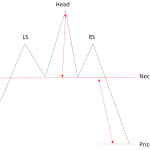- Investor intelligence refers to making financial decisions based on data evidence, using large alternative data sets to understand a business
Investor intelligence refers to making financial decisions based on data evidence, often using large alternative data sets to better understand a business before deciding to invest. Companies with high investor intelligence see the best returns, often using data-driven market insights to stay ahead of their competitors.
In fact, 69% of all hedge fund managers routinely employ alternative data to make smarter investment choices and deliver higher returns than their competitors.
In this article, we’ll be discussing four benefits of investor intelligence, looking at how embracing data can radically improve your returns and help you stay ahead of the market.
What Is Alternative Data?
In finance, alternative data relates to information published externally about a business, conglomerate, or entire sector that is then used to make investing decisions. This data is often pooled using advanced tools, analyzing millions of data points simultaneously to accurately depict the data’s target.
These data sets, compiled using big data techniques, are used to discover trends, obtain insight into a company’s online success, or see how an industry is changing over time. As data and data analysis tools continue to grow in size and scope, alternative data is forging a new pathway for investors to use.
By taking advantage of data tools, financial institutions are able to increase their investor intelligence, making investments based on signals that not everyone is looking at.
How Can Embracing Investor Intelligence Boost My Returns?
The following data is essentially like taking a peek behind the curtain, seeing trends before they hit media web pages, and understanding company financials to a greater degree.
The four most significant benefits that we’ll be discussing are:
- Discovering trends
- Digital presence breakdowns
- Supercharged analyses
- Changes in market share
Let’s break these down even further.
Discover Trends Ahead of Time
Market trends are industry-wide changes that increase or decrease the average stock prices within a particular sector. A great example of this would be the uptake of meeting platform software at the beginning of the 2020 pandemic. As meeting software became more necessary, with businesses around the globe needing work-from-home solutions, the whole industry saw a radical boost in prices.
By using data analysis tools, you’ll be able to both notice trends before they happen and forecast long-term movements in certain industries. Pulling data from search engines, effective data tools will allow you to see how searches for specific industries are changing over time. While one sector may be growing in the number of people searching for it each month, another may be shrinking.
By noticing consecutive weeks of growth, you’ll be able to identify market-wide trends impacting certain industries. Responding to these, by making the most of investor intelligence, you’ll be able to invest in industries that are trending upwards while pulling your money out of those on a downward spiral.
Similarly, with the power of modern data analysis, these tools can also use historical trends to then forecast future developments in specific industries. This can give you an insight into which industries may pick up over the next few months while also signalling which may not be the best long-term investments.
Data allows you to be one step ahead of the competition, getting onboard with market trends before they even occur.
Understand a Company’s Digital Presence
When deciding which company to invest in, it’s a good idea to look at how their digital presence is shaping up. A company that is increasingly receiving more traffic online has the potential to grow, meaning that eventually, their stock price will likely also rise.
By using alternative data to discover monthly visits per user on certain businesses, you’ll be able to understand how the digital presence of a company is trending. Instead of waiting to read about the next big company in the media, you’ll be able to conduct your own research, catching upsurges right as they begin.
In doing this, you’ll be able to invest in companies that are on an uptrend, making sure to get in ahead of time before the market rush closes in. You’ll stay ahead of the curve, maximizing your profits.
Additionally, this process works in reverse, with data that reveals when a company is losing its digital presence suggesting it might be time to reallocate.
By following a company’s digital presence with data tools, you’ll have insider access to the best decisions before they’re widely known.
Data Ubiquity Leads to Supercharged Analysis
When compiling and analyzing data, what would take human hours or even days takes AI mere milliseconds. Instead of waiting weeks for a data report from a data analyst, the development of data tools has supercharged the speed at which these reports can be generated.
With the click of a button, AI can pull together millions of disparate data points across various metrics, compiling in-depth reports that are accurate to the second. Data analysis can now be a continuous process, with many data tools updating automatically to reflect recent developments.
With these daily or even hourly updates, you’ll always be able to access the information you need to make better-investing decisions.
With the tendency of the market to shift and change rapidly, investing has become an increasingly fast game. Now, using the power of alternative data, you’ll be able to stay one step ahead, making investments based on what the data at that moment is telling you.
Monitor Changes in Digital Market Shares
No business works in a vacuum; they’re constantly changing and adapting to try and overcome their category competitors. With data tools, you’ll be able to watch as certain industries shift over time and the relative market share constantly changes.
By keeping a close eye on these trends, you’ll be able to make smarter decisions about which businesses in those industries are currently the best to invest in. If you see one player start to rise through the ranks, you’ll be able to make a data-driven assumption about its upward trajectory.
Instead of hoping that companies rise in value after investing, you’ll be able to use the plethora of modern data tools to more effectively hazard guesses on the market. Using the power of data, these educated guesses will better position you for financial success when investing in the stock market.
Final Thoughts on Investor Intelligence
Data is the most powerful tool in the modern investor’s belt. While financials and balance sheets have long been available for analysis, recent developments in data tools have now opened up the digital landscape for detailed analysis.
By using alternative data tools, you’ll be able to reap the benefits of intelligent investing, boosting your portfolio, making more educated stock picks than ever.




